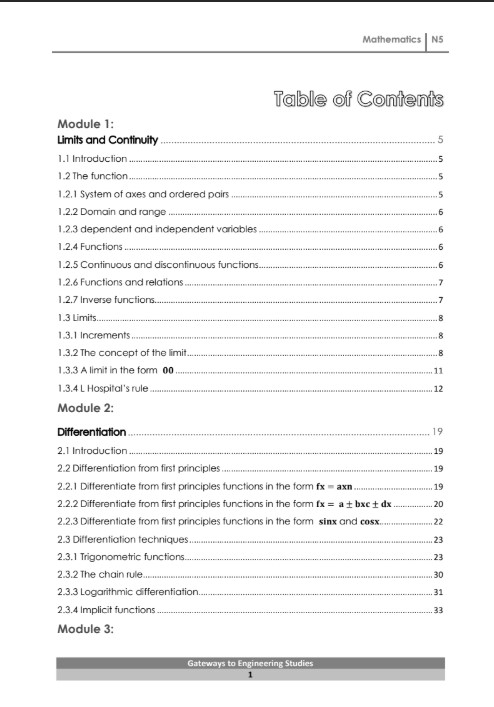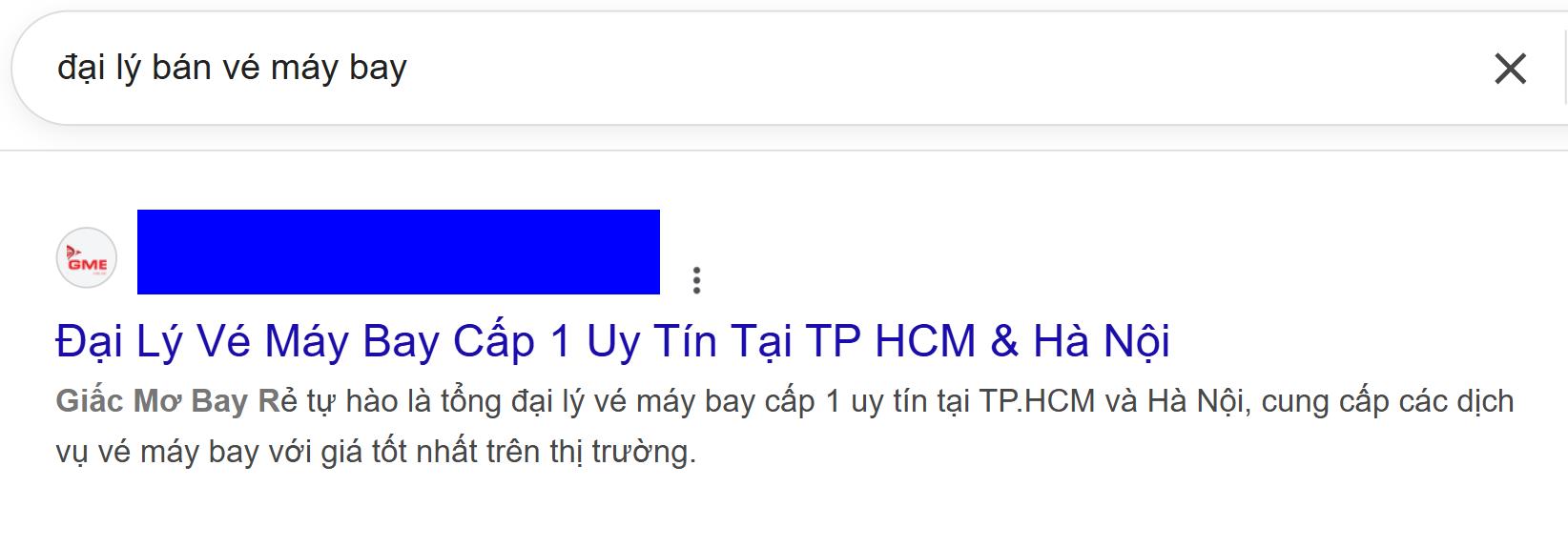Bên dưới đây mình có spoil trước 1 phần nội dung của cuốn sách với mục tiêu là để bạn tham khảo và tìm hiểu trước về nội dung của cuốn sách. Để xem được toàn bộ nội dung của cuốn sách này thì bạn hãy nhấn vào nút “Tải sách PDF ngay” ở bên trên để tải được cuốn sách bản full có tiếng Việt hoàn toàn MIỄN PHÍ nhé!



Table of Contents
| Module 1: Limits and Continuity | 5 | |
| 1.1 Introduction | ………………………………………………………………………………………………………………….. | 5 |
| 1.2 The function | ………………………………………………………………………………………………………………….. | 5 |
| 1.2.1 System of axes and ordered pairs | ……………………………………………………………………………. | 5 |
| 1.2.2 Domain and range | ……………………………………………………………………………………………. | 6 |
| 1.2.3 Dependent and independent variables | ………………………………………………………………………. | 6 |
| 1.2.4 Functions | ………………………………………………………………………………………………………….. | 6 |
| 1.2.5 Continuous and discontinuous functions | …………………………………………………………………….. | 6 |
| 1.2.6 Functions and relations | ………………………………………………………………………………………… | 7 |
| 1.2.7 Inverse functions | ……………………………………………………………………………………………….. | 7 |
| 1.3 Limits | ……………………………………………………………………………………………………………………… | 8 |
| 1.3.1 Increments | ………………………………………………………………………………………………………. | 8 |
| 1.3.2 The concept of the limit | ………………………………………………………………………………………… | 8 |
1.3.3 A limit in the form 00\frac{0}{0}00 | …………………………………………………………………………………… | 11 |
| 1.3.4 L Hospital’s rule | ……………………………………………………………………………………………….. | 12 |
| Module 2: Differentiation | 19 | |
| 2.1 Introduction | ………………………………………………………………………………………………………………….. | 19 |
| 2.2 Differentiation from first principles | …………………………………………………………………………………… | 19 |
2.2.1 Differentiate from first principles functions in the form fx=axnfx = ax^nfx=axn | ………………………………… | 19 |
2.2.2 Differentiate from first principles functions in the form fx=a±bx±cxfx = a\pm bx\pm cxfx=a±bx±cx | …………………… | 20 |
2.2.3 Differentiate from first principles functions in the form sinx\sin xsinx and cosx\cos xcosx | ………………………. | 22 |
| 2.3 Differentiation techniques | ……………………………………………………………………………………………….. | 23 |
| 2.3.1 Trigonometric functions | ………………………………………………………………………………………. | 23 |
| 2.3.2 The chain rule | …………………………………………………………………………………………………. | 30 |
| 2.3.3 Logarithmic differentiation | …………………………………………………………………………………… | 31 |
| 2.3.4 Implicit functions | ……………………………………………………………………………………………… | 33 |
| Module 3: Application of Differentiation | 42 | |
| 3.1 Introduction | ………………………………………………………………………………………………………………….. | 42 |
| 3.2 Determine the roots of cubic polynomials | ………………………………………………………………………… | 42 |
3.2.1 The table for xxx and f(x)f(x)f(x) | ……………………………………………………………………………………. | 42 |
| 3.2.2 Draw the graph | ……………………………………………………………………………………………….. | 43 |
| 3.2.3 Find the roots | …………………………………………………………………………………………………. | 43 |
| 3.3 Determine the Turning points of cubic polynomials | ………………………………………………………….. | 45 |
| 3.4 Rates of change | ………………………………………………………………………………………………………….. | 54 |
| 3.4.1 Velocity and acceleration | …………………………………………………………………………………….. | 54 |
| 3.4.2 Related rates of change | ………………………………………………………………………………………. | 55 |
| Module 4: Integration Techniques | 66 | |
| 4.1 Introduction | ………………………………………………………………………………………………………………….. | 67 |
| 4.2 Indefinite integrals | ………………………………………………………………………………………………………. | 67 |
| 4.2.1 Standard forms of integrals | …………………………………………………………………………………… | 68 |
| 4.2.2 The chain rule | …………………………………………………………………………………………………. | 69 |
| 4.2.3 Other integrals | …………………………………………………………………………………………………. | 70 |
| 4.3 Substitution to transform composite functions | …………………………………………………………………. | 71 |
4.4 The integral of the form ∫f′(x)f(x)dx\int f'(x)f(x) dx∫f′(x)f(x)dx | …………………………………………………………………….. | 72 |
4.5 The integral of the form ∫f′(x).fnxdx\int f'(x).f^n x dx∫f′(x).fnxdx | …………………………………………………………………….. | 73 |
| 4.6 Algebraic fractions | ………………………………………………………………………………………………………. | 75 |
| 4.6.1 Partial fractions | ……………………………………………………………………………………………….. | 75 |
| Module 5: Application of the Definite Integral | 89 | |
| 5.1 Introduction | ………………………………………………………………………………………………………………….. | 89 |
| 5.2 The area between two curves | ………………………………………………………………………………………… | 94 |
| 5.3 Second moment of area | ……………………………………………………………………………………………… | 102 |
| 5.3.1 Second moment of area of a rectangular lamina | ……………………………………………………….. | 102 |
| 5.3.2 Second moment of area of a circular lamina | ……………………………………………………………. | 103 |
| Module 6: Differential Equations | 114 | |
| 6.1 Introduction | ………………………………………………………………………………………………………………….. | 114 |
| 6.2 General and particular solutions of differential equations | …………………………………………………… | 115 |
| Past Examination Papers | ……………………………………………………………………………………………….. | 122 |
Icons used in this book
We use different icons to help you work with this book; these are shown in the table below.
| Icon | Description | Icon | Description |
| (Graduation cap icon) | Assessment / Activity | (Music notes/film reel icon) | Multimedia |
| (Checklist icon) | Checklist | (Wrench/spanner and gear icon) | Practical |
| (Eye icon) | Demonstration/ observation | (Two people at lectern icon) | Presentation/ Lecture |
| (Question mark icon) | Did you know? | (Open book icon) | Read |
| (Magnifying glass icon) | Example | (Medical cross icon) | Safety |
| (Test tube icon) | Experiment | (Safety helmet icon) | Site visit |
| (Group discussion icon) | Group work/ discussions, role-play, etc. | (Warning triangle icon) | Take note of |
| (Gears/workplace icon) | In the workplace | (Pencil and paper icon) | Theoretical – questions, reports, case studies, etc. |
| (Key icon) | Keywords | (Lightbulb icon) | Think about it |
Module 1
Limits and Continuity
Learning Outcomes
On the completion of this module the student must be able to:
- Introduction to the function
- Apply the L Hospital’s rule
- Describe the conditions of continuity
- Determine whether a function is continuous or discontinuous in a specified point
1.1 Introduction
(Open book icon) This module introduces the function and describes the application of the L Hospital’s rule. It also describes the conditions of continuity and explains how to determine whether a function is continuous or discontinuous in a specified point.
1.2 The function
1.2.1 System of axes and ordered pairs
The reason why the three numbered pairs in Figure 1.1 are termed ordered pairs is because the
xxx
value is written first and then the
yyy
value.
(Image showing a graph with axes labelled X, -X, Y, -Y and three points: (3;2), (1;-1), (-1;-3))
Figure 1.1 A system of axes with three orders pairs



